
How to Use hw 637 boost converter: Examples, Pinouts, and Specs
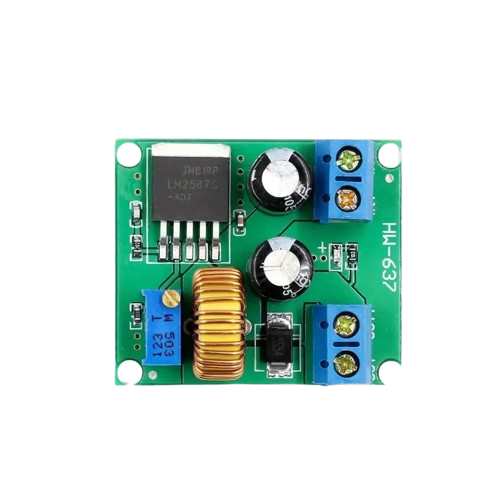
 Design with hw 637 boost converter in Cirkit Designer
Design with hw 637 boost converter in Cirkit DesignerIntroduction
The HW 637 Boost Converter is a DC-DC step-up converter designed to increase the input voltage to a higher output voltage while maintaining power balance. This component is widely used in applications requiring efficient voltage conversion, such as battery-powered devices, LED drivers, and portable electronics. Its compact design and high efficiency make it a popular choice for hobbyists and professionals alike.
Explore Projects Built with hw 637 boost converter
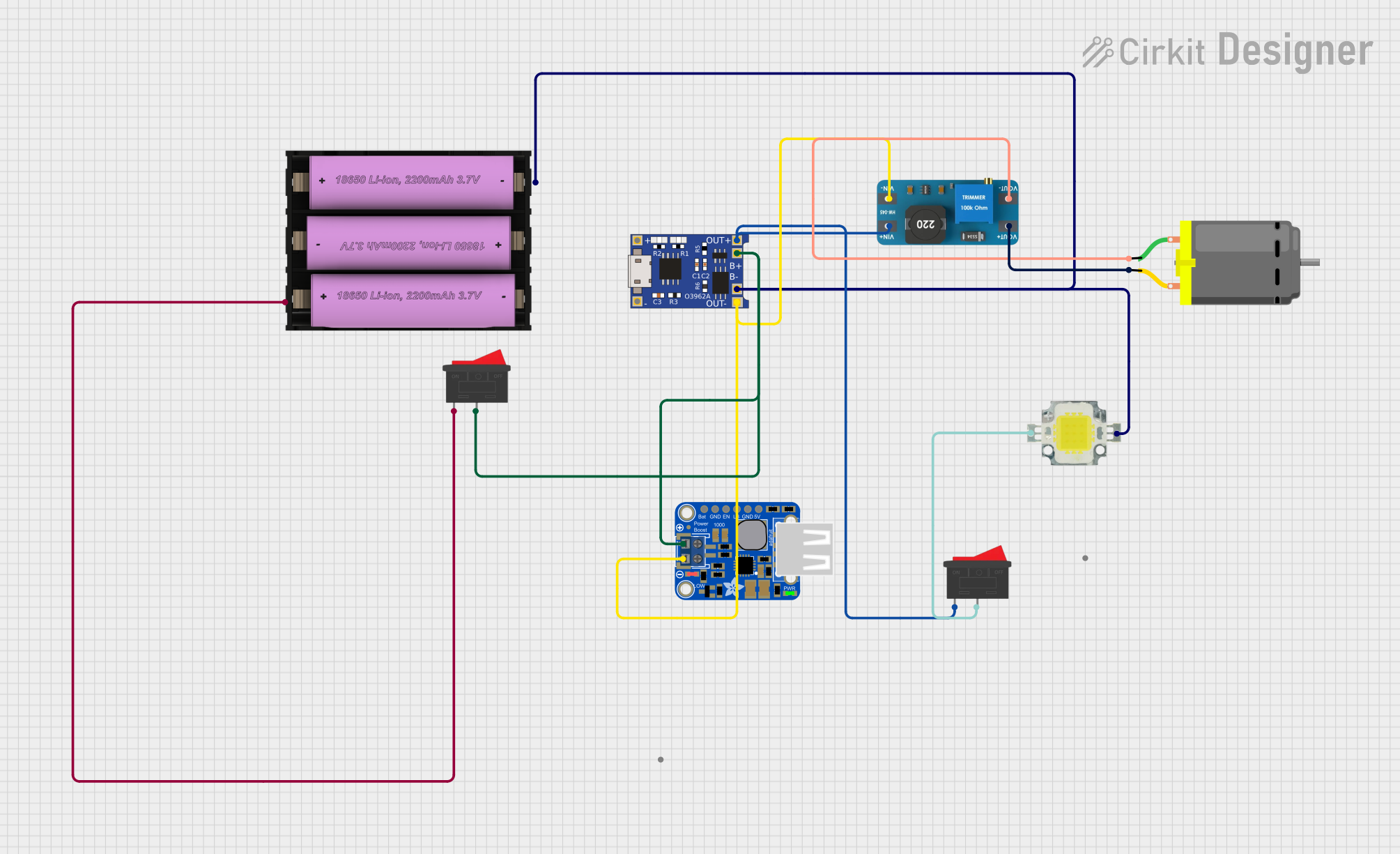
 Open Project in Cirkit Designer
Open Project in Cirkit Designer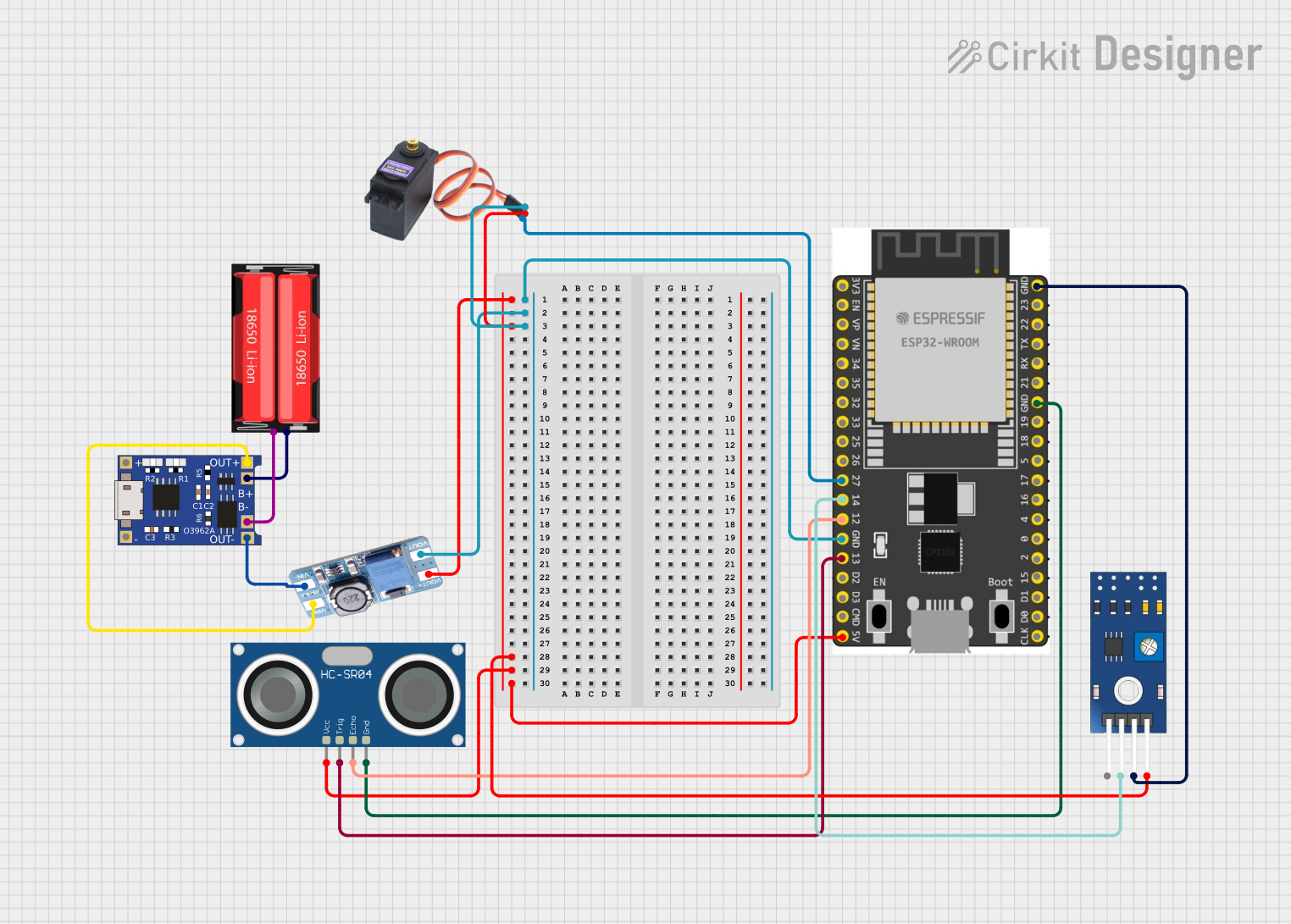
 Open Project in Cirkit Designer
Open Project in Cirkit Designer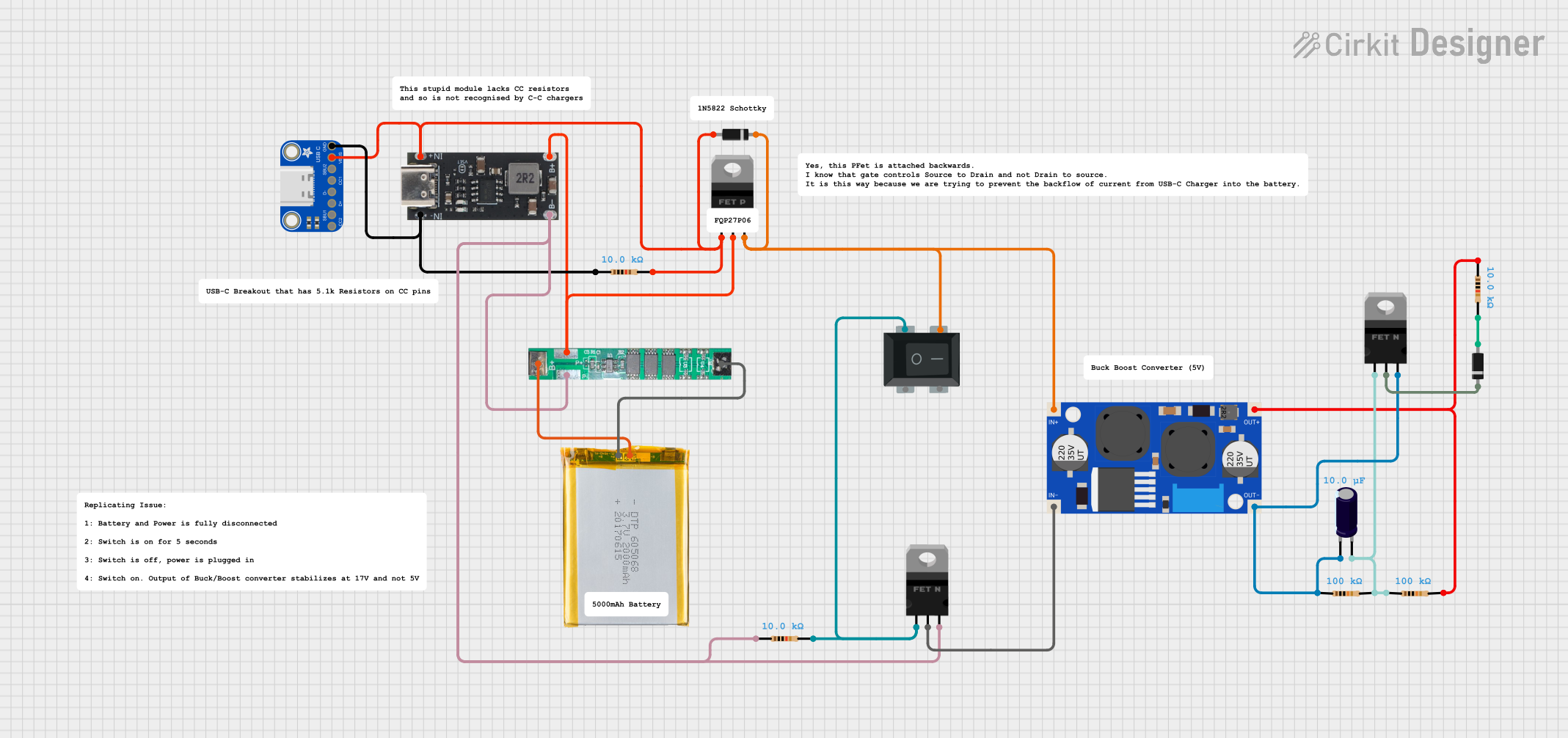
 Open Project in Cirkit Designer
Open Project in Cirkit Designer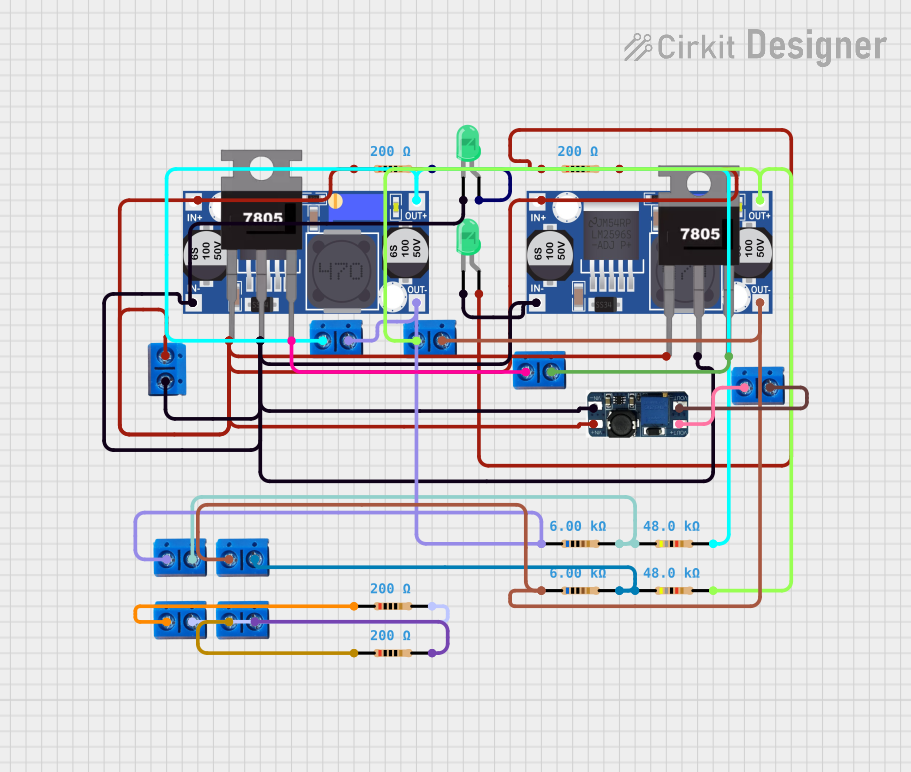
 Open Project in Cirkit Designer
Open Project in Cirkit DesignerExplore Projects Built with hw 637 boost converter

 Open Project in Cirkit Designer
Open Project in Cirkit Designer
 Open Project in Cirkit Designer
Open Project in Cirkit Designer
 Open Project in Cirkit Designer
Open Project in Cirkit Designer
 Open Project in Cirkit Designer
Open Project in Cirkit DesignerCommon Applications and Use Cases
- Powering high-voltage devices from low-voltage sources (e.g., batteries)
- LED lighting systems
- Solar-powered systems
- Portable electronics and wearables
- Robotics and IoT devices
Technical Specifications
The HW 637 Boost Converter is designed to deliver reliable performance under a range of operating conditions. Below are its key technical specifications:
| Parameter | Value |
|---|---|
| Input Voltage Range | 3V to 32V |
| Output Voltage Range | 5V to 35V |
| Maximum Output Current | 2A (with proper heat dissipation) |
| Efficiency | Up to 94% |
| Switching Frequency | 150 kHz |
| Dimensions | 43mm x 21mm x 14mm |
Pin Configuration and Descriptions
The HW 637 Boost Converter has four main pins for input and output connections:
| Pin Name | Description |
|---|---|
| VIN+ | Positive input voltage terminal |
| VIN- | Negative input voltage terminal (ground) |
| VOUT+ | Positive output voltage terminal |
| VOUT- | Negative output voltage terminal (ground, shared) |
Usage Instructions
How to Use the HW 637 Boost Converter in a Circuit
Connect the Input Voltage:
- Connect the positive terminal of your power source (e.g., battery) to the
VIN+pin. - Connect the negative terminal of your power source to the
VIN-pin.
- Connect the positive terminal of your power source (e.g., battery) to the
Connect the Output Load:
- Connect the positive terminal of your load (e.g., LED, motor) to the
VOUT+pin. - Connect the negative terminal of your load to the
VOUT-pin.
- Connect the positive terminal of your load (e.g., LED, motor) to the
Adjust the Output Voltage:
- Use the onboard potentiometer to adjust the output voltage.
- Turn the potentiometer clockwise to increase the output voltage and counterclockwise to decrease it.
- Use a multimeter to measure the output voltage while adjusting to ensure accuracy.
Power On:
- Once all connections are secure, power on the input source. The HW 637 will step up the input voltage to the desired output voltage.
Important Considerations and Best Practices
- Heat Dissipation: Ensure proper heat dissipation, especially when operating at high currents. Use a heatsink or active cooling if necessary.
- Input Voltage Range: Do not exceed the specified input voltage range (3V to 32V) to avoid damaging the converter.
- Output Voltage Adjustment: Always measure the output voltage with a multimeter when adjusting the potentiometer to prevent overvoltage damage to your load.
- Polarity: Double-check the polarity of your connections. Reversing the input or output connections can damage the module.
- Load Requirements: Ensure the load does not exceed the maximum output current of 2A.
Example: Using the HW 637 with an Arduino UNO
The HW 637 Boost Converter can be used to power an Arduino UNO from a low-voltage source, such as a 3.7V Li-ion battery. Below is an example setup:
- Connect the battery's positive terminal to
VIN+and negative terminal toVIN-. - Adjust the output voltage to 9V using the potentiometer.
- Connect
VOUT+to the Arduino's VIN pin andVOUT-to the Arduino's GND pin.
Here is a simple Arduino code example to blink an LED while powered by the HW 637:
// Simple LED Blink Example
// This code blinks an LED connected to pin 13 of the Arduino UNO.
// Ensure the HW 637 Boost Converter is providing 9V to the Arduino's VIN pin.
void setup() {
pinMode(13, OUTPUT); // Set pin 13 as an output
}
void loop() {
digitalWrite(13, HIGH); // Turn the LED on
delay(1000); // Wait for 1 second
digitalWrite(13, LOW); // Turn the LED off
delay(1000); // Wait for 1 second
}
Troubleshooting and FAQs
Common Issues and Solutions
No Output Voltage:
- Cause: Incorrect wiring or loose connections.
- Solution: Double-check all connections, ensuring proper polarity and secure contacts.
Output Voltage Not Adjustable:
- Cause: Faulty potentiometer or incorrect adjustment.
- Solution: Verify the potentiometer is functioning correctly. Use a multimeter to monitor the output voltage while adjusting.
Overheating:
- Cause: Excessive current draw or insufficient heat dissipation.
- Solution: Reduce the load current or add a heatsink to the module.
Low Efficiency:
- Cause: Operating outside the optimal input voltage range or high load current.
- Solution: Ensure the input voltage is within the specified range and the load current does not exceed 2A.
FAQs
Q: Can the HW 637 Boost Converter be used with a solar panel?
A: Yes, the HW 637 can be used with a solar panel as long as the panel's output voltage is within the 3V to 32V range. Ensure the panel provides sufficient current for your load.
Q: What happens if I exceed the maximum input voltage?
A: Exceeding the maximum input voltage (32V) can permanently damage the module. Always use a regulated power source within the specified range.
Q: Can I use the HW 637 to charge a battery?
A: While the HW 637 can step up voltage for charging, it does not include battery management features. Use a dedicated battery charging circuit for safe and efficient charging.
Q: How do I calculate the output current?
A: The output current depends on the input voltage, output voltage, and efficiency. Use the formula:
[
I_{out} = \frac{V_{in} \times I_{in} \times \text{Efficiency}}{V_{out}}
]
Ensure the output current does not exceed 2A.
By following this documentation, you can effectively use the HW 637 Boost Converter in your projects.